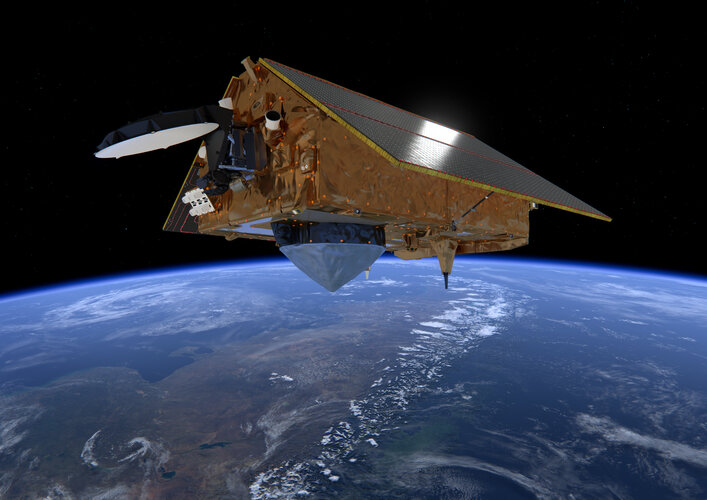SpaceX sunset launch from Canaveral completes Space Coast trio
Monday, 10 October 2022 17:05
SpaceX was able to send up a Falcon 9 with a pair of satellites from Cape Canaveral on Saturday at sunset to complete a trio of launches for the Space Coast this week.
Tuesday saw an Atlas V lift off from Cape Canaveral Space Force Station while Wednesday saw the liftoff of the Crew-5 mission on a SpaceX Falcon 9 from Kennedy Space Center sending four passengers to the International Space Station.
SpaceX was in line to make it three launches in three days, but scrubbed the Thursday launch attempt, aborted with 30 seconds left on the countdown clock. But Saturday's liftoff in clear skies and a setting sun went off without a hitch.
The company opted to skip a Friday attempt to allow it more time for teams to look at the launch vehicle.
Liftoff took place at 7:05 p.m. from Space Launch Complex 40 carrying the Intelsat G-33/G-34 satellites to geosynchronous transfer orbit.
The first-stage booster made a record-tying 14th landing on SpaceX's droneship A Shortfall of Gravitas in the Atlantic Ocean.
The launch was SpaceX's 45th this calendar year from both Florida and California.
SpaceX deploys two of six C-band satellites Intelsat is launching this year
Monday, 10 October 2022 16:02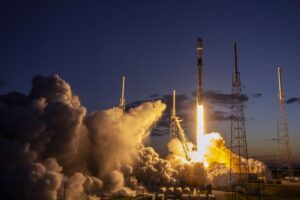
SpaceX Oct. 8 successfully deployed the first two of seven satellites Intelsat needs to clear C-band spectrum in the United States, keeping the operator on course to launch all but one of them before the end of this year.
The moon is the perfect spot for humanity's offsite backup
Monday, 10 October 2022 15:54
In a recent study, a collaborative team of researchers discuss the potential for future lunar settlers to establish a backup data storage system of human activity in the event of a global catastrophe on Earth that could be used to recover human civilization on a post-catastrophe planet. This comes as NASA's Artemis missions plan to send people back to the moon for the first time since 1972, coupled with current global events such as the ongoing coronavirus pandemic and the War in Ukraine, with Russian President Vladimir Putin recently threatening nuclear war. Given the current state of world affairs, how important is it to establish a type of off-world data backup?
"The COVID-19 pandemic taught us how vulnerable our world is to large-scale disasters because of its growing interconnectivity," says Carson Ezell, who is an undergraduate at Harvard University, the Director of Space Futures Initiative, and lead author on the study.
Former SES CEO joins megaconstellation startup E-Space
Monday, 10 October 2022 14:53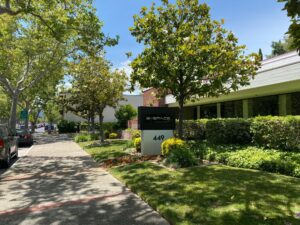
Former SES CEO Karim Michel Sabbagh has returned to the space industry to oversee strategy in Europe and the Middle East for E-Space, the connectivity startup plotting a network of hundreds of thousands of satellites.
Image: European Service Modules currently in production at Airbus facilities
Monday, 10 October 2022 14:24
The third (pictured) and fourth European Service Modules are currently in production at Airbus facilities in Bremen, Germany. They are key elements of the Orion spacecraft, the first to return humans to the moon since the 1970s.
These modules provide the spacecraft with propulsion, power and thermal control, and will supply astronauts with water and oxygen. The Orion spacecraft is composed of a European Service Module, a Crew Module Adapter and a Crew Module. The latter two components are provided by NASA.
Powering flights to the moon is a collaborative effort. The components and hardware used in the European Service Modules are built and supplied by more than twenty different companies from ten different countries in Europe.
When ready for launch, each module will have a total mass of 13,500 kg, almost two-thirds of which is propellant (rocket fuel). More than 11 km of cables are needed to send commands and receive information from the many on-board sensors. As can be seen in the photo, tie-wraps (yellow) come in handy when it comes to keeping all these cables organized.
Launch on demand: If satellites are shot down, will Space Force be ready to restock?
Monday, 10 October 2022 13:00
Responsive space launch capabilities are gaining more attention as world events that underline the strategic value of satellites also makes them more attractive targets for adversaries.
The post Launch on demand: If satellites are shot down, will Space Force be ready to restock? appeared first on SpaceNews.
Italy’s Stromboli erupts
Monday, 10 October 2022 13:00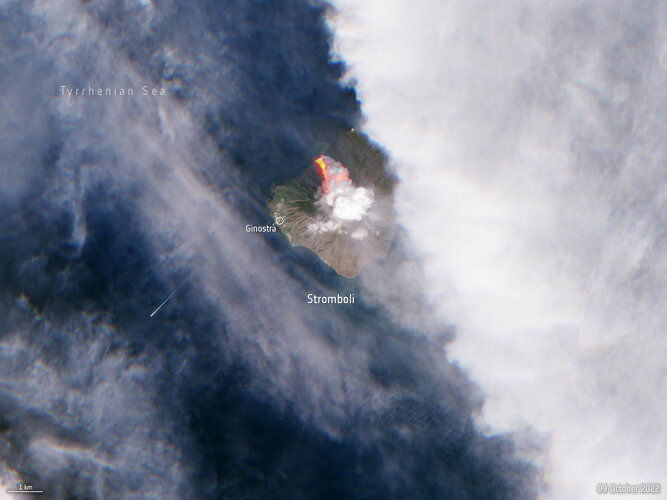 Image:
A volcano on the Italian island of Stromboli erupted early on Sunday morning, releasing huge plumes of smoke and a lava flow pouring into the sea. The Copernicus Sentinel-2 mission captured this image of the aftermath less than five hours after the eruption.
Image:
A volcano on the Italian island of Stromboli erupted early on Sunday morning, releasing huge plumes of smoke and a lava flow pouring into the sea. The Copernicus Sentinel-2 mission captured this image of the aftermath less than five hours after the eruption. TRUTHS on the table at ESA’s Ministerial Council
Monday, 10 October 2022 11:45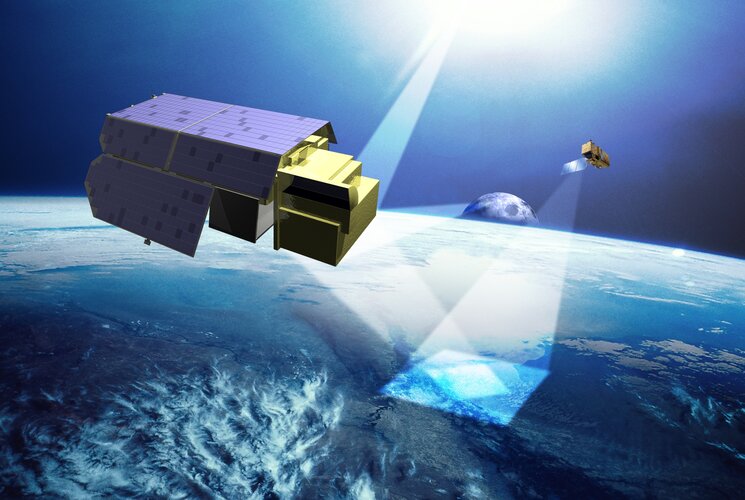
With the satellite and instrument design consolidated and the scientific community assured it will deliver the data they need, TRUTHS has been approved as part of Earth Observation Programme proposal for the upcoming ESA Council Meeting at Ministerial Level. Carrying a primary International System of Units reference system, TRUTHS promises to set the gold standard for climate measurements.
Firefly says Alpha launch a success despite payload reentries
Monday, 10 October 2022 10:26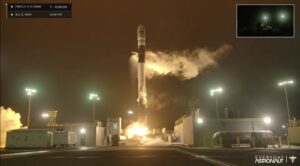
Firefly Aerospace says its Alpha launch early this month was a success despite the fact that its payloads, placed in a lower orbit than planned, reentered within several days.
The post Firefly says Alpha launch a success despite payload reentries appeared first on SpaceNews.
Micro Meat and Orbital Assembly team up on space-based food production venture
Monday, 10 October 2022 09:00 Micro Meat, a pioneer in the alternative protein industry, and Orbital Assembly (OA), developer of space-based business parks with variable gravity, have signed a memorandum of understanding to co-develop cultivated meat production systems in space.
Under the agreement, Micro Meat will install its proprietary meat production equipment aboard OA's Pioneer-classTM space station to provide fo
Micro Meat, a pioneer in the alternative protein industry, and Orbital Assembly (OA), developer of space-based business parks with variable gravity, have signed a memorandum of understanding to co-develop cultivated meat production systems in space.
Under the agreement, Micro Meat will install its proprietary meat production equipment aboard OA's Pioneer-classTM space station to provide fo Giant impact could have formed the Moon more rapidly, scientists reveal in new simulations
Monday, 10 October 2022 09:00 Scientists from Durham University's Institute for Computational Cosmology used the most detailed supercomputer simulations yet to reveal an alternative explanation for the Moon's origin, with a giant impact immediately placing a Moon-like body into orbit around Earth.
The researchers simulated hundreds of different impacts, varying the angle and speed of the collision as well as the masses
Scientists from Durham University's Institute for Computational Cosmology used the most detailed supercomputer simulations yet to reveal an alternative explanation for the Moon's origin, with a giant impact immediately placing a Moon-like body into orbit around Earth.
The researchers simulated hundreds of different impacts, varying the angle and speed of the collision as well as the masses Milky Way's graveyard of dead stars found
Monday, 10 October 2022 04:05 The first map of the 'galactic underworld' - a chart of the corpses of once massive suns that have since collapsed into black holes and neutron stars - has revealed a graveyard that stretches three times the height of the Milky Way, and that almost a third of the objects have been flung out from the galaxy altogether.
"These compact remnants of dead stars show a fundamentally different dis
The first map of the 'galactic underworld' - a chart of the corpses of once massive suns that have since collapsed into black holes and neutron stars - has revealed a graveyard that stretches three times the height of the Milky Way, and that almost a third of the objects have been flung out from the galaxy altogether.
"These compact remnants of dead stars show a fundamentally different dis NASA's Chandra Adds X-ray Vision to Webb Images
Monday, 10 October 2022 04:05 In the summer of 2022, NASA's James Webb Space Telescope released images from some of its earliest observations with the newly commissioned telescope. Almost instantaneously, these stunning images landed everywhere from the front pages of news outlets to larger-than-life displays in Times Square.
Webb, however, will not pursue its exploration of the universe on its own. It is designed to w
In the summer of 2022, NASA's James Webb Space Telescope released images from some of its earliest observations with the newly commissioned telescope. Almost instantaneously, these stunning images landed everywhere from the front pages of news outlets to larger-than-life displays in Times Square.
Webb, however, will not pursue its exploration of the universe on its own. It is designed to w Rocket Lab successfully launches 31st Electron rocket
Monday, 10 October 2022 04:05 Rocket Lab USA, Inc. (Nasdaq: RKLB) has broken its annual launch record with the launch of "It Argos Up From Here," a dedicated launch for General Atomics Electromagnetic Systems (GA-EMS). The mission was Rocket Lab's 31st Electron launch overall and the eighth for the year to date, besting the company's previous record of seven launches in 2020. Rocket Lab has now successfully launched a missio
Rocket Lab USA, Inc. (Nasdaq: RKLB) has broken its annual launch record with the launch of "It Argos Up From Here," a dedicated launch for General Atomics Electromagnetic Systems (GA-EMS). The mission was Rocket Lab's 31st Electron launch overall and the eighth for the year to date, besting the company's previous record of seven launches in 2020. Rocket Lab has now successfully launched a missio 

